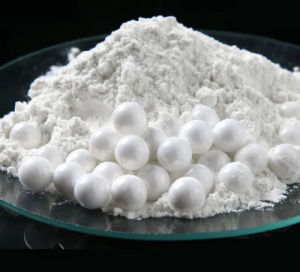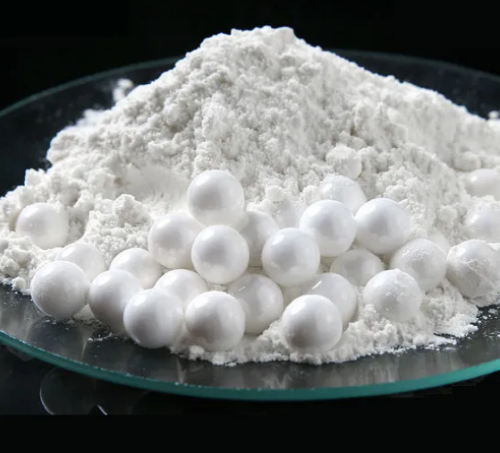Introduction
In the world of advanced materials, Zirconia, or zirconium dioxide (ZrO2), emerges as a protagonist. It stands out for its remarkable properties, including high strength, durability, and resistance to corrosion and wear. Zirconia has carved its niche across various industries.

Let’s explore the diverse applications and features of zirconia. Hope that you can have a comprehensive understanding of its role in today’s material science landscape.
1. Revolutionizing Dentistry: Crowns and Implants
The advancement of dental materials has always been pivotal in enhancing oral health care. Among these materials, zirconia has emerged as a cornerstone in the field of restorative dentistry. Its unique properties have made it an ideal choice for fabricating dental implants, crowns, and bridges.
It offers a blend of functionality, aesthetics, and durability that surpasses many traditional materials.
–Biocompatibility:
One of the most critical aspects is its biocompatibility. Zirconia excels in this regard, as it is inert and does not react adversely with body tissues. The risk of inflammation, infection, or rejection is significantly reduced. Furthermore, Zirconia-made dental restorations can last for many years without causing any harm to the surrounding oral environment.
–Aesthetic Appeal
In addition to its health benefits, Zirconia is highly prized for its aesthetic qualities. The material’s natural tooth-like color and translucency closely mimic the appearance of natural teeth. Yet, metal-based restorations can sometimes show through the gums or the crowns themselves as a dark line.
–Durability and Strength
Durability is another hallmark of Zirconia-based dental products.
- With exceptional strength and resistance to wear and tear, ZrO2 is suitable for use in the high-pressure environment of the mouth.
- It can withstand the forces of chewing and biting over extended periods.
- Moreover, the material’s resistance to staining and discoloration means that restorations retain their aesthetic appeal for years to come.
2. Enhancing Automotive Performance: Oxygen Sensors
ZrO2 has emerged as a key material in this arena, particularly in the development of advanced oxygen sensors for exhaust systems. These sensors contribute significantly to optimizing fuel combustion, enhancing vehicle efficiency, and reducing harmful emissions.
–High-Temperature Resistance
Zirconia’s exceptional high-temperature resistance makes it an ideal material for use in the harsh environment of vehicle exhaust systems. Zirconia not only survives these temperatures but also maintains its structural integrity and functional properties over time. This durability ensures that oxygen sensors can operate reliably for the lifespan of the vehicle.
–Optimizing Fuel Combustion
The primary function of zirconia-based oxygen sensors is to measure the oxygen levels in a vehicle’s exhaust gases. This information is crucial for the engine’s control unit (ECU) to adjust the air-fuel mixture in real time. This is not just a matter of saving energy and reducing costs for drivers; it also plays a significant role in enhancing the vehicle’s performance.
–Reducing Emissions
Besides, zirconia-based oxygen sensors have a significant positive impact on the environment. By optimizing the combustion process, these sensors help reduce the emission of harmful gases, such as carbon monoxide (CO), nitrogen oxides (NOx), and unburnt hydrocarbons.
Related reading: Stabilized Zirconia Used in Oxygen Sensor
3. Powering the Future: Fuel Cells
Central to the operation of SOFCs is Zirconium Dioxide (ZrO2), commonly known as Zirconia. This material’s unique properties are key to the functionality and efficiency of SOFCs, offering a glimpse into the future of clean energy.
–Oxygen Ion Conduction at Elevated Temperatures
One of the most remarkable properties of Zirconia is its ability to conduct oxygen ions at high temperatures.
- At these elevated temperatures ranging from 600°C to 1000°C, Zirconia becomes an excellent conductor of oxygen ions.
- So, they move freely through the cell’s electrolyte.
- They enhance the electrochemical conversion process that occurs in SOFCs, and they transform chemical energy directly into electrical energy without the intermediate step of combustion.
4. Advancing Medical Prosthetics: Hip and Knee Replacements
The medical field uses it in the production of hip and knee prosthetics. This field capitalizes on its wear resistance and biocompatibility.
These prostheses offer patients improved quality of life through durable and reliable joint replacements. They showcase zirconia’s critical role in medical advancements.
5. Precision Manufacturing: Industrial Cutting Tools
Zirconia’s hardness is harnessed in creating cutting tools for precision machining.
These tools can withstand the rigors of cutting and shaping various materials, from metals to composites, ensuring accuracy and efficiency in manufacturing processes.
6. Industrial Durability: Pump and Valve Components
In industries dealing with corrosive substances, its corrosion resistance makes it an ideal material for components like pumps, valves, and seals. This application underscores zirconia’s ability to enhance the longevity and reliability of industrial equipment.
Conclusion
In summary, zirconia’s applications are as diverse as they are impactful. We enhance our smiles with dental implants, power clean energy solutions, and adorn us in sparkling jewelry. The ten remarkable products made from zirconia show not only the material’s versatility.
As we continue to push the boundaries of material science, zirconia’s role in shaping our world remains undisputed. It promises new horizons in technology, medicine, and beyond.
Stanford Advanced Materials (SAM) is proud to present a comprehensive collection of Zirconium products. SAM encompasses everything from zirconium metals to zirconium compounds. We are open to and welcome customized orders to meet your specific requirements. For further details and to explore our offerings, please get in touch with us.
